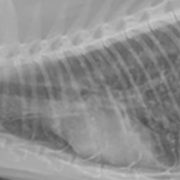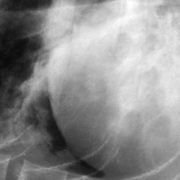No pain-true gain?
Effective and safe sedation and analgesia for the emergent patient
Lisa Bazzle, DVM, DACVECC
Veterinary Specialty Hospital, San Diego, CA
Posted on 2017-04-04 in Emergency & critical care and Anesthesia & analgesia
Half of all veterinary patients present emergently in pain, especially dogs presenting with orthopedic or neurosurgical conditions, yet rapid and accurate identification and scoring of pain remains challenging, as physiologic and behavioral responses are inconsistent and reliable pain scoring systems are lacking. In human patients, the time to deliver analgesia increases with illness severity, age, and trauma, with similar delays likely occurring in our veterinary population.
Pain assessment
Pain assessment should occur alongside initial triage examination of the cardiovascular, respiratory, urologic, and neurologic systems, taking note of signalment, type/location/duration of pain, and changes in behavior and physiologic parameters (HR, RR/RE, BP) during palpation of affected areas. While cardiovascular and respiratory stability should be prioritized, implementing analgesia or inducing anesthesia may be necessary concurrent with the efforts to correct volume status, electrolyte disturbances, and acid-base status. Evaluation of mentation/neurologic status should be performed prior to analgesic administration. Typically, painful dogs are significantly older, heavier, and somatic in origin (skin and orthopedic injuries predominate). Cats exhibiting pain are also older, their pain tends to be more chronic and visceral in origin (gastrointestinal, hepatobiliary, and urinary conditions predominate).
Protocol selection
Selecting an analgesic protocol without complete information regarding the patient’s organ function or perfusion necessitates venous access for the intravascular administration of drugs that are reversible, titratable, and sparing to the cardiorespiratory systems. Volume-deplete, hypothermic patients are more sensitive to the vasodilatory and cardiac depressant effects of many analgesics necessitating the importance of intravascular volume repletion to maintain perfusion. Local anesthetics and synergistic combinations of systemic analgesics decrease the risk of side effects. The combination of an opioid and tranquilizer (neuroleptanalgesia) is extremely important in the sedation, induction, and analgesia of the unstable patients. While the cardiovascular sparing effects of an opioid and benzodiazepine make it an ideal combination for unstable patients whose perfusion status is dynamic, the combination of an opioid and alpha-2 agonist provides analgesia and effective sedation in the more stable patients where ventilation and perfusion are adequate. Phenothiazines (acepromazine) are potent sedatives (without analgesic effects) that should be reserved for stable patients with normal perfusion. In general, NSAIDs and steroids should NOT be used in the emergent patient without knowledge regarding the patient’s volume status, renal/liver function, medication history, or immune system status.
When patients require immediate intubation, pre-oxygenation and pre-medication or induction with neuroleptanalgesia may be useful to decrease the total dose of induction agent, which minimizes the
vasodilatory and respiratory depressant effects of these agents. Utilizing CRIs of neuroleptoanalgesic agents may minimize the minimum alveolar concentration of inhalants, which commonly cause hypoventilation/hypotension.
Anticipating, accurately identifying and localizing, and effectively and safely managing pain in our emergent patient requires serial assessment of physical and behavioral signs, while developing a multimodal protocol that addresses the sedative, analgesic, or anesthetic requirements of the patient that minimizes possible systemic side effects (respiratory depression, myocardial dysfunction, hypotension, or emesis).
For the respiratory patient
- OXYGEN!
- Cats: after confirming no immediate pleural space disease
- Butorphanol 0.1 – 0.2 mg/kg IV/IM/SQ (can repeat up to 0.4 mg/kg)
- +/- Midazolam 0.25 mg/kg
- +/- Ketamine 5-10 mg/CAT
- Dogs (upper airway)
- Cool environment (to minimize panting)
- Butorphanol 0.1 – 0.2 mg/kg IV/IM (can repeat PRN)
- +/- Acepromazine 0.005 – 0.01 mg/kg IV/IM (can repeat PRN)
For the blocked cat
- Butorphanol 0.2 – 0.5 mg/kg
- Midazolam 0.25 – 0.50 mg/kg
- Ketamine 1-2 mg/kg (caution: renal clearance)
- +/- propofol 10-20 mg (total) – and INTUBATE to protect relaxed airway
- AVOID: alpha-2 agonists and acepromazine
For the CV stable, emergently painful patient needing sedation/analgesia
- Hydromorphone 0.1 – 0.2 mg/kg or Methadone 0.1-0.2 mg/kg
- +/- Acepromazine 0.01 mg/kg
- +/- Dexmedetomidine 1-3 mcg/kg
For the CV unstable, emergently painful patient needing sedation/analgesia
- Fentanyl 3 mcg/kg/hr +/- Midazolam 0.25 mg/kg
- AVOID Acepromazine, alpha-2 agonists
Final tips
- Butorphanol is NOT an effective analgesic.
- Buprenorphine provides suboptimal acute analgesia/sedation. Its prolonged onset of action (˜ 1 hour) and difficulty in reversal makes it a suboptimal analgesic/sedative.
- Acepromazine is NOT an analgesic and can NOT be reversed.
- Avoid steroids in trauma patients.
- Multi-modal therapy (opioid + benzodiazepine) is effective in most cases.
About the author
|

 Dr. Bazzle provides support to the growing ER, critical care, and blood bank services at the Veterinary Specialty Hospital in San Diego. Dr. Bazzle completed veterinary school at Cornell, a rotating internship at Penn, a 3-year critical care residency at NC State University and 2 faculty years at the University of Georgia.
Dr. Bazzle provides support to the growing ER, critical care, and blood bank services at the Veterinary Specialty Hospital in San Diego. Dr. Bazzle completed veterinary school at Cornell, a rotating internship at Penn, a 3-year critical care residency at NC State University and 2 faculty years at the University of Georgia.








